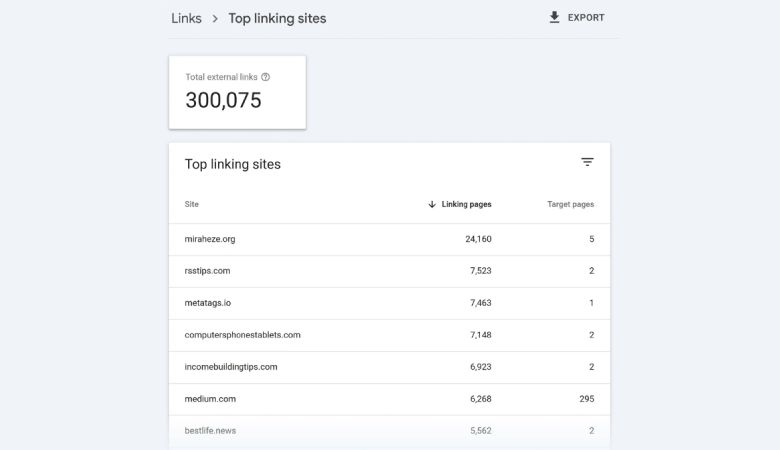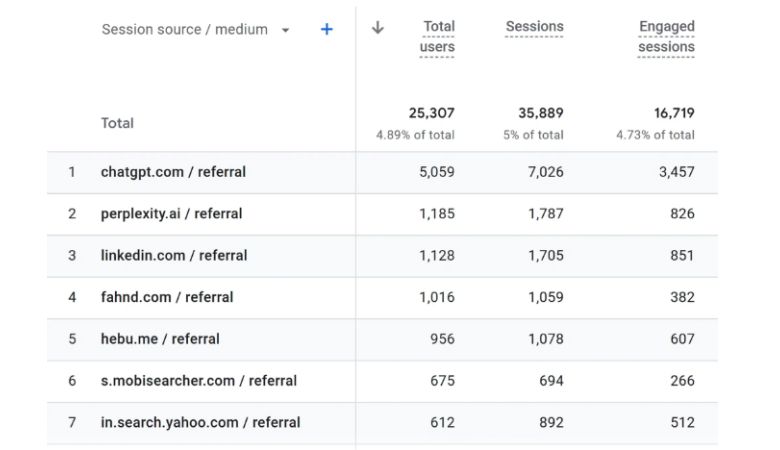Boost Your SEO With The Right Types of Backlinks
In the world of SEO, backlinks remain one of the most powerful off-page ranking factors. In fact, they often carry more weight than many on-page elements when it comes to how search engines decide who ranks where.
A backlink—also called an inbound or incoming link—is simply a link from another website that points to your site. On the flip side, when your website links out to another, you’re giving them a backlink.
Think of each backlink as a vote of confidence. Search engines like Google look at these votes to evaluate the trustworthiness, authority, and relevance of your website and the site linking to you.
Backlinks play a huge role in building what SEOs call “link equity” (or what some like to refer to as “link juice”). It’s basically the online version of street cred—when credible and relevant websites link to your content, search engines take it as a strong signal that your content matters.
For businesses in the U.S., focusing on quality backlink building is a smart strategy to climb the search rankings, drive more organic traffic, and strengthen your online presence.
Where Can We See The Site’s Backlinks?
You might be thinking, “I’ve never done any backlink outreach—so I probably don’t have any backlinks, right?”
Not exactly!
Even if you haven’t actively built backlinks, your site can still pick them up naturally. Sometimes, automated bots will add your site to random directories, RSS feeds, or—less ideally—spammy websites.
On the flip side, trustworthy websites might have discovered your content and found it useful or relevant to their own. When that happens, they may link to it—giving you a solid, organic backlink without you lifting a finger.
Curious to know if your site has picked up backlinks over time, even without link building? Good news: there are a few popular tools and methods you can use to find out.
Semrush free Backlink Analytics tool
Check out Semrush’s free Backlink Analytics tool to instantly view your backlinks. Simply type your site URL into the search box and hit Enter.
Google Search Console
- Log into your website’s Google Search Console
- Click on Links in the left-hand navigation menu
- Click on Top linking sites under the External links column
- You should see a list of your referring domains
GA4
- Open your Google Analytics account
- Click on Reports
- Click on Acquisition and then Traffic acquisition
- Type referral into the search bar on the Traffic acquisition chart and hit Enter
- Select “session source/medium” from the drop-down menu below the search bar
- You should now see all referring domains to your site
Manual search queries
Sometimes, you can find new backlinks by searching for key terms related to your website in quotations. Easy examples include searching for “[brand name],” the “[URL],” or “[author name(s)]” associated with your site.
What Kind of Backlinks Matter Most?
When it comes to backlinks, not all links are created equal. Search engines look at several signals to evaluate the quality of your backlink profile—here are two that carry serious weight:
1. Domain Variety
Getting backlinks from a wide range of websites is far more valuable than getting a bunch from just one. Even better? When those links come from a mix of domain types—like .com, .org, and .edu.
Generally speaking, .org domains are used by nonprofit organizations, while.edu domains are reserved for educational institutions. These types of websites usually publish high-quality, trustworthy content—so when they link to your site, it tells search engines, “Hey, this content’s legit.”
That said, not all .org and .edu sites are automatically trustworthy. Some marketers have caught on and created fake or low-quality domains just to hand out backlinks. So, always check the credibility of the site before trying to build links with it.
2. Backlink Variety
Getting a backlink to your homepage is great, but it shouldn’t stop there. You’ll want links pointing to different parts of your website, too.
Whether it’s a blog post, service page, or a product listing, having backlinks spread across your site shows search engines that your content is useful in more ways than one. It helps paint a fuller picture of your site’s relevance and authority across various topics.
3. A Mix of Sources
A strong backlink profile pulls links from all kinds of reputable sources—think news outlets, niche blogs, industry websites, forums, and even social media.
This variety tells search engines that your content is respected across the board, not just in one corner of the internet. When multiple types of trusted platforms are linking to you, it sends a signal that your site has wide-reaching authority and relevance.
4. Smart Anchor Text Strategy
Anchor text is the actual clickable text used in a hyperlink. If most of your backlinks use the same anchor, like your brand name, author name, or generic phrases like “click here”—search engines won’t get much insight into what your content is actually about.
Instead, aim for contextual anchor text—phrases that naturally fit within the content and describe what the linked page offers.
Mix it up, too! Using a range of relevant keywords in your anchor text helps search engines understand the broader topics your site covers, giving you more opportunities to rank for related search terms.
5. Relevance of Linking Domains
It’s great to get backlinks from a variety of websites—but they should still relate to your industry or content. When a site that shares your niche or topic links to you, it helps search engines understand what your website is about and strengthens your topical authority.
On the flip side, if you’re getting links from totally unrelated sites, it can confuse search engines and even trigger red flags. Spammy link tactics like the “spray and pray” approach—where you chase quantity over quality—can actually hurt your SEO in the long run.
6. Steady Backlink Growth
Search engines love to see growth—but what they love even more is consistency. Whether your site earns a few links every few months or gains a handful every week, it’s the steady pace that matters most.
A consistent flow of backlinks shows that your content stays valuable over time and continues to earn attention. Big spikes in backlinks out of nowhere, especially from questionable sources, can make Google suspicious of shady practices like link buying or farming.
7. Watch Your Competition
Wondering how your backlink game stacks up against others in your space? That’s where competitor analysis comes in.
By comparing your backlink profile with top-ranking competitors, you can spot gaps—maybe they’re earning links from high-authority sites, or using more diverse and keyword-rich anchor text.
Tools like Semrush’s Backlink Analytics (check out the Competitors tab) can help you uncover those opportunities and adjust your link-building strategy accordingly.
Understanding where your competitors are winning can reveal exactly where to aim your next backlink push.
What Makes a Backlink Valuable?
Not all backlinks are created equal. When search engines evaluate a backlink, they consider several key signals to figure out how much impact that link should have on your website’s search rankings.
Here’s what gives a backlink real value:
Domain Authority (DA) or Domain Rating (DR)
One backlink from a high-authority site can be far more powerful than five from low-authority websites. Why? Because authority matters. A lot.
Domain authority (or domain rating, depending on the SEO tool you use) is a score from 0 to 100 that reflects how trustworthy and influential a website is in the eyes of search engines.
- Scores above 60 = strong authority
- Scores between 40–60 = moderate authority
- Scores under 40 = low authority
Sites with higher scores tend to pass more “SEO juice” when they link to you, especially if they’re well-established and aligned with your niche. And yes—getting a backlink from Google itself feels like a badge of honor (though ironically, even Google doesn’t score a perfect 100; that’s typically reserved for giants like Facebook).
So, the higher the domain authority of the site linking to you, the more positively it can impact your search rankings.
Domain-to-domain relevance
A backlink is more valuable if it comes from a domain or a specific page highly relevant to your website’s content or industry. A clear connection will help search engines quickly understand the significance of your link and prioritize it over links that don’t naturally connect.
What Else Affects a Backlink’s Value?
Two often-overlooked elements that can make or break the power of a backlink are where it’s placed and what text is used to link to your site.
Link Placement
Where your backlink lives on a referring page matters. Search engines tend to assign more value to links that are placed within the main content of a page—right in the middle of a blog post, article, or guide.
On the flip side, links stuffed into a footer, sidebar, comments section, or banner ad don’t carry as much weight. That’s because these placements often feel less intentional and more like boilerplate or background content.
So when building backlinks, aim to land links that are part of the actual content—naturally placed, not forced.
Anchor Text
Anchor text is the clickable text that makes up the hyperlink—and it plays a huge role in SEO.
Let’s say your site covers pet care, and you’ve written an in-depth blog post about the benefits of dog rope toys. Now imagine a respected site like the Waltham Petcare Science Institute links to your post using the anchor text “dog rope toys.”
That’s a win. Why? Because the anchor text clearly describes what your page is about, and it’s coming from a credible, authoritative source. Search engines can easily match that signal with your content, which can seriously improve your chances of ranking for terms like “dog rope toys.”
Relevant, keyword-rich anchor text from trusted websites = SEO gold.
Page & Domain Traffic
A backlink is more valuable when it comes from a website—or a specific page—that gets real, consistent traffic. Think about it: if the page linking to you has steady organic visitors, it’s not only passing SEO value but also opening the door for referral traffic and brand visibility.
On the other hand, a backlink from a page that barely gets any clicks might help a little, but it’s not going to move the needle much. It’s like having a billboard in the middle of nowhere—technically there, but not doing much for you.
So when evaluating backlink opportunities, look for pages with solid rankings and actual visitor flow.
Link Age
Just like a fine wine, backlinks get better with age—at least in the eyes of search engines.
An older backlink that’s been live for a long time signals stability, trust, and long-term relevance. These links have had more time to earn credibility in the search engine results pages (SERPs), and that boosts their impact.
Want to check how “aged” your backlink is? Tools like Semrush and Ahrefs will show you when the link was First Seen and Last Seen—giving you a good estimate of how long it’s been active.
What are the different types of backlinks?
Backlinks come in all shapes and sizes. Ideally, you want a healthy mix—a little bit of everything—to create a strong, natural backlink profile.
Let’s explore the most common types of backlinks and how they fit into your SEO strategy.
Follow vs. Nofollow Links
Every backlink falls into one of two categories: follow (sometimes incorrectly called “dofollow”) or nofollow. Each type plays a unique role in your backlink strategy and should appear throughout your backlink profile.
Follow Links
These are the gold standard. A follow link is a default backlink that allows search engine crawlers to pass link equity (aka “link juice”) from the linking page to your site.
In simple terms:
A follow link tells Google, “Hey, I trust this page. It’s worth checking out.”
That trust—reflected in rankings—is exactly what helps boost your site’s SEO.
So when you get a follow link from a high-authority domain, it sends strong ranking signals to search engines and boosts your visibility.
Nofollow Links
Nofollow links, on the other hand, include a special piece of code:
rel=”nofollow”
This tells search engines not to pass along link equity to the linked site. But that doesn’t mean they’re worthless—not at all.
Here’s how nofollow links still bring value:
- Brand visibility: Even without passing ranking credit, a nofollow link on a reputable site helps boost your brand recognition. Think of it like a subtle endorsement.
- Targeted traffic: Many nofollow links live on forums, blog comments, or social media platforms—places full of real people who could click and convert.
- Healthy backlink profile: A mix of follow and nofollow links shows search engines that your link profile is natural and not manipulated. Overusing follow links only can raise red flags.
Natural backlinks
A natural backlink occurs when a source discovers your site organically and links to your content without any direct effort from you, recognizing it as a trustworthy and authoritative resource worth referencing.
Natural backlinks are the gold standard of backlinks. They’re what all site owners dream of because natural backlinks happen, well, naturally. Their top benefits include:
No Outreach Needed
Natural backlinks don’t require you to lift a finger for outreach. The only effort required is to publish valuable, high-quality content. If your content is insightful, informative, or engaging enough, others will find it and link to it on their own.
No “Hidden Agenda”
Because natural backlinks aren’t influenced by paid deals, sponsorships, or link exchanges, search engine crawlers can easily spot that they’re earned. There’s no hidden agenda, and they add genuine value to both the referring site and yours. This is critical for maintaining an organic, trustworthy online presence.
Source Diversity
Natural backlinks typically come from a wide array of sources. You could earn them from industry blogs, media outlets, social media, and even prestigious .edu or .org domains if you’re producing top-tier content. This diversity strengthens your backlink profile and shows search engines that your content is recognized across different platforms and audiences.
Anchor Text Variety
When you earn natural backlinks, you often get a variety of anchor text as well. The anchor text used will usually be highly relevant and contextual to both the referring page and your content, further adding to the SEO value of the link.
The ultimate goal in any link-building strategy should be to make your backlinks as natural as possible. By focusing on creating content that attracts a diverse array of links from reputable sources, you’ll build a robust backlink profile that demonstrates your site’s authority, relevance, and value to both users and search engines.
Manually Built Backlinks
A manually-built backlink is a link that you intentionally acquire through outreach or strategic efforts. These are not earned passively like natural backlinks but are created by actively engaging with other site owners, content creators, or digital communities.
Common manual link-building methods include:
- Guest post blogging – Writing and publishing articles on another website in exchange for a backlink.
- Influencer collaboration or partnership – Partnering with influencers to feature your content or website.
- Broken link building – Finding broken links on other sites and suggesting your content as a replacement.
- Resource page link building – Reaching out to get your content added to curated lists or resource pages.
- Qwoted, SourceBottle, and other quote request platforms – Providing expert quotes or insights in exchange for a backlink.
- Unlinked mentions – Identifying where your brand is mentioned but not linked, then asking for a backlink to be added.
Technically, most links—except truly natural backlinks or certain editorial ones—fall into the manually built category. These are often the building blocks of a solid backlink profile, especially for new or growing websites.
Benefits of Manually Built Backlinks
- Control over anchor text and link placement – You have more say in how and where your link appears.
- Ability to target specific pages – You can direct traffic and authority to key pages like product or service pages.
- Faster results compared to waiting for natural links – You don’t have to wait for someone to discover your content.
- Stronger niche relevance – You can pursue links from industry-specific websites, which increases topical authority.
- Relationship building – Outreach efforts often lead to long-term collaborations and partnerships.
- Brand exposure – Contributing to guest posts or resources can increase your brand’s visibility in your target market.
When done strategically and ethically, manually building backlinks can provide a major boost to your SEO performance and help set the stage for natural links down the road.
Be mindful of spammy backlinks
Every website has its fair share of spammy backlinks because we can’t control who links to our sites. Some features of spammy backlinks include:
- Low-quality site: A spammy backlink may point to a low-quality site where the content is sparse, unoriginal, poorly formatted, and/or overly promotional
- Spammy link-building tactics like link farming and buying links: These efforts will imprint into the site’s backlink “footprint,” and search engines will eventually catch on and penalize sites for this
- Overused, over-optimized anchor text: If a site has a suspicious number of backlinks with identical keyword-rich anchor text, it can be a red flag that it’s trying to game the system to rank for that keyword
If you avoid spammy link-building practices and monitor any harmless spam backlinks beyond your control, there’s no need to worry too much about them. There’s an expected amount of spammy backlinks that come with every site. In fact, they give a site a more natural-looking backlink profile.
You can always disavow backlinks if you decide they’re hurting your site or if you’re nervous about search engine penalties.
What Are Footprints When It Comes to Backlinks?
A backlink footprint is essentially the digital trail your backlinks leave behind. It includes identifiable patterns and characteristics like anchor text usage, link placement, referring domains, and how contextually relevant your links are to the content they live in.
Search engines—especially Google—use advanced algorithms and machine learning to analyze these patterns across your entire backlink profile. This helps them determine whether your link-building tactics are natural, ethical, and high-quality… or manipulative and spammy.
These patterns are what make up your backlink footprint—and they speak volumes.
Why Footprints Matter
Footprints often get a bad rap, mostly because they’re talked about in the context of black hat SEO tactics or spammy link schemes. When a backlink footprint shows repeated red flags—like identical anchor text across multiple links, links from low-quality directories, or tons of links from unrelated domains—it’s a signal to search engines that something’s off.
But when you’re playing by the rules?
Your footprint becomes your credibility trail. It naturally evolves into a clean, diverse, and legitimate pattern that shows bots and algorithms your content is worth linking to—and worth ranking higher in search results.
Partner with our Digital Marketing Agency
Ask Engage Coders to create a comprehensive and inclusive digital marketing plan that takes your business to new heights.
Contact Us
Next Steps for a Stronger Backlink Profile
Your goal? Build a diverse, well-rounded backlink profile. That means incorporating all the types of backlinks we’ve covered—natural, manually built, follow, nofollow, and more.
By understanding what each backlink type brings to the table and keeping an eye on how your footprint forms over time, you’ll be in a strong position to improve your site’s visibility, authority, and trustworthiness in search.
Ready to dive into your backlink strategy? Partner with Engage Coders to develop a strategic, search-engine-approved link-building plan that drives real SEO results.










